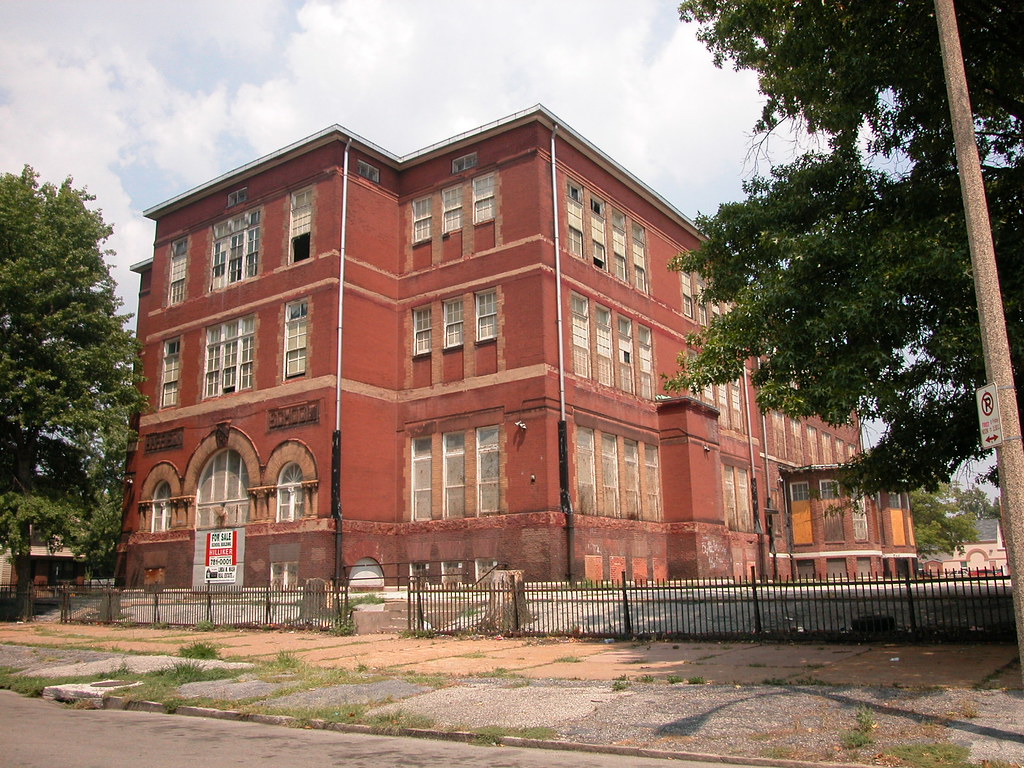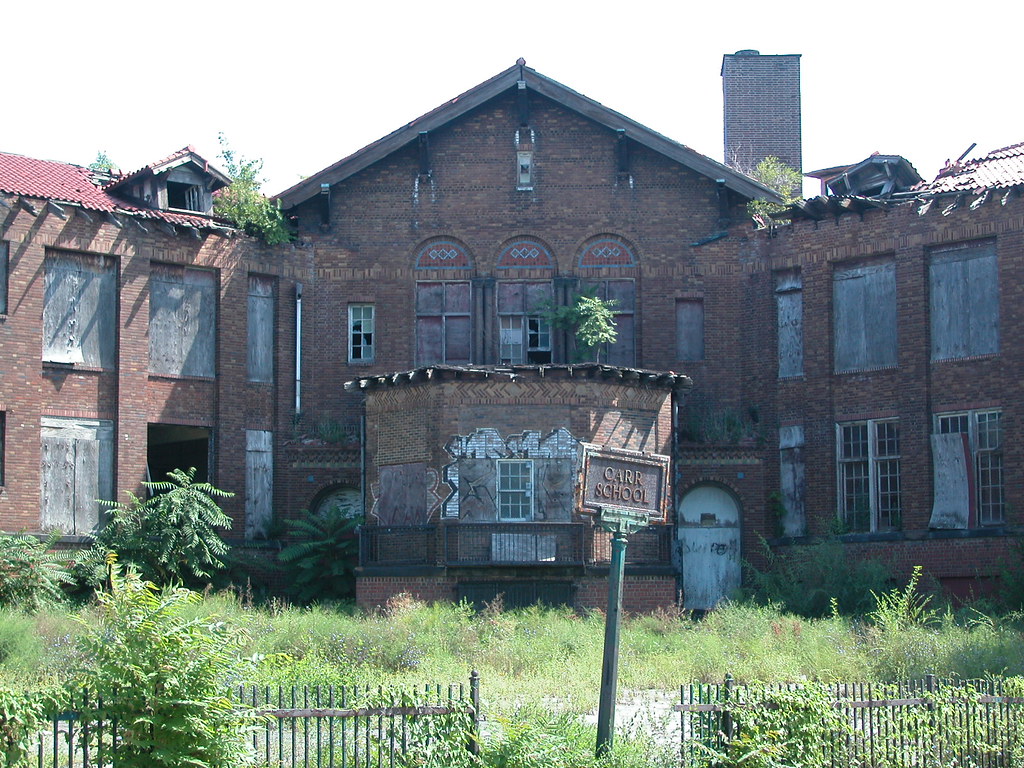by Michael R. Allen
The meetings of the Saint Louis Board of Education have devolved into an aimless political ritual. This assessment is born from the experience that the observer could have gathered at the April 27 meeting of the board, which consisted of some of the most uninspiring antics of the whole sorry spectacle that the new board majority began in April 2003. The underlying mission of the board majority has always been polarization of the discourse of the schools situation. Before the election of the Gang of Four corporate-backed members last year, the board already was in a state of crisis over how to rebuild (I avoid the tainted word reform) the flagging Saint Louis Public Schools.
While the board had seen some nasty fights, at no point did the board’s majority seek to take as their direct opponent the parents, teachers, students and staff of the district. The discourse of the board prior to April 2003 consisted of confused attempts by the four-person majority of longtime members, including William Purdy, to silence the three-person insurgent faction of reformers, which included Bill Haas (elected in 1997) and Rochell Moore (elected in 2001). This discourse was built on conflict, but was certainly not a monologue: the reformers got their points across, and came close to swinging votes in favor of their ways of making changes. Then, the big issues were over budget sizes and transparency of process. The reformers wanted to cut the bloated district budget to provide more direct services to students, and maintain a transparent political process that allowed the district’s actual constituents to have rights in decision-making.
Now, the discourse has been altered significantly. The phrase “budget cut†is more likely associated with and spoken by the school board majority and its most prominent members, former Mayor Vincent Schoemehl. The reformers are the ones the press accuses of hanging on to bloated and antiquated system—the very ones that they rhetorically assailed before. The majority’s members are posed as reformers, and have adopted the vocabulary of reform: “efficiency,†“results, “excellence,†“cutting waste,†etc. All the while, the old reformers have not really changed positions while the majority is actually an insurgent faction of members whose appropriation of vocabulary masks a mission to privatize much of the district’s functions and make the rest palatable to the influx of new affluent city dwellers who feel safer with corporate paradigms of government.
The reformers — now reduced only to Moore and Haas as their former ally Amy Hilgemann drifts in and out of alliance with the majority — are as true as ever to their old discursive challenge: they want the school board to accept the terms of its constitiution by the law, and to behave within certain bounds that are limited by obligation to the people who compose the district. Hardly radical, the reform group is actually conservative in its insistence on popular democracy restrained by the gentle restraint of the law. They want the board to act as guarantor of the welfare of district students and staff, instead of as bottom-line managers of district policy. Haas and Moore, in their often-disparate ways, ask that the board members act as if their roles connoted political commitment. The majority, as its behavior and language demonstrates, rudely disagrees.
The end result, though, has not been heartening to anyone who thinks that the board ought to act as guardians of the right to education. The old reformers have enjoyed widespread popular support from the day that the new majority was seated. District parents and teachers were quick to realize that the new majority was little more than a front for Mayor Francis Slay and his corporate cronies, who construe reform as anything that forcibly changes a public good into a private, unilaterally-controlled commodity. When the new majority hired the private company Alvarez and Marsal to manage the district, and placed the firm’s obnoxious William Roberti as Acting Superintendent, the people reacted harshly. School board meetings will never be the same as before.
Yet the meetings may never be any different than they are now, either. What began as a radical crest of descent has dwindled into a ritual of signification. The logic of board meetings used to be disrupted by odd events: one man’s jumping on a table in front of Roberti, Moore’s hapless threats to fellow board members and the building energy of the audience at meetings all spelled out a plan of revolt. Furthermore, the parents and teachers banded together and started an organization called The Community that aimed to use the schools issue as a way to revive popular radicalism among the city residents — largely people of color — affected by the school board majority’s destructive acts.
Now, however, the plan of revolt has not materialized. The energetic promise of hundreds of hecklers has not done much to stop the board from approving the wholesale destruction of the city schools with endless 5-2 votes. The meetings once felt like instances of democratic repossession of public meetings, but now feel like tired rituals in which dominance and dissent are predictably scripted (that is, utterly devoid of transformative meaning).
On Tuesday, the audience jeered, heckled and booed Roberti and the school board majority. We applauded students and others who spoke critically of the district’s management. We managed to get Schoemehl to walk out in a huff. Yet the whole meeting probably accomplished almost nothing in the way of improving a single city child’s education. The audience has fallen into accepting the signification of dissent for the thing itself, and the result may take awhile to realize but could be neutralization (through neglect) of the radical force of the populace that created disruption before.
Obviously, the board majority has recuperated some of the audience tactics. Board members have apologized for rudeness and often offer a disarming smile when their remarks lead to heckling. Yet they still stumble into ritual from time to time, given that the one move they won’t make is to compromise on their elitist agenda. Thus they continue to enrage audiences, even though they are better at appearing undeserving of such rage then before. After all, who could be moved to rage at their moderate agenda? The way the majority argues, one can only disagree with them — a move in which the dissident rescinds ownership of the district to the board majority.
The dissenting audience has not yet adapted to this recuperation of their rage with any identifiable strategy. They seem to be the predictable crowd on the other side of the proscenium, and their gestures are no longer pregnant with any imminent meaning. Many people were quieter on Tuesday, but that seemed due to a general weariness in the perpetual opposition than in any strategic refusal to “play along.†Most members of the audience continue to boldly signify their dissent through booing the almost all of the majority’s statements, even the introduction of commonplace agenda items. The audience feels powerless, but is almost now resigned to that feeling. Unfortunately, mainstream media will portray this resignation as a sign that the majority’s agenda has proven necessary, and that the popular resistance has died out.
The audience at the school board meetings may be quietly involved in The Community’s efforts to recall the board majority, or other less-obvious measures. Perhaps they really do have the upper hand. Yet that upper hand is not evident in their discursive present at the board meetings. The audience is engaging in a tired ritual in which their dissent exists only through signification — not through direct action. Their dissent is so easy to dismiss to the nonbeliever when it is only present in ritual; one does not want to learn to decode the already-static codes of the audience unless one is highly opposed to the board majority’s agenda.
The situation is discursively polarized, which represents a momentary victory for the board majority and friends because they have the power. Even though the masses and the board majority are both stifled in this discourse, the majority still has the power of action that transforms the discursive environment (the city schools). The masses lack that power, although they once had it. They need to reclaim the meetings space through creative distractions and discursive challenges, unless they plan on some political action (recall?) that will alter the political space of the school board meetings in a manner impossible to effect from within.
The audience at the meetings has no reason to hesitate or tire. The board majority’s agenda can only be successful if the school board’s decision-making process is predicated on its own malleability; that is, if there are no blocks to their discourse becoming the district near-monologue that allows for their proclaiming that their actions are the unavoidable result of consensus (among the monologists) . The audience — as well as Haas and Moore — needs to create genuine discursive interference so that the monologue is impossible. Without monologue, the board meetings would allow for polyphony, and every truly democratic action would be possible (because compromise among the legitimate owners of the district would be a process-inscribed precondition to any action). Power would collapse the moment that the audience started to break out of the ritual and transgress the proscenium, as they have done before.
This article was first published April 30, 2004 in mprsnd.





